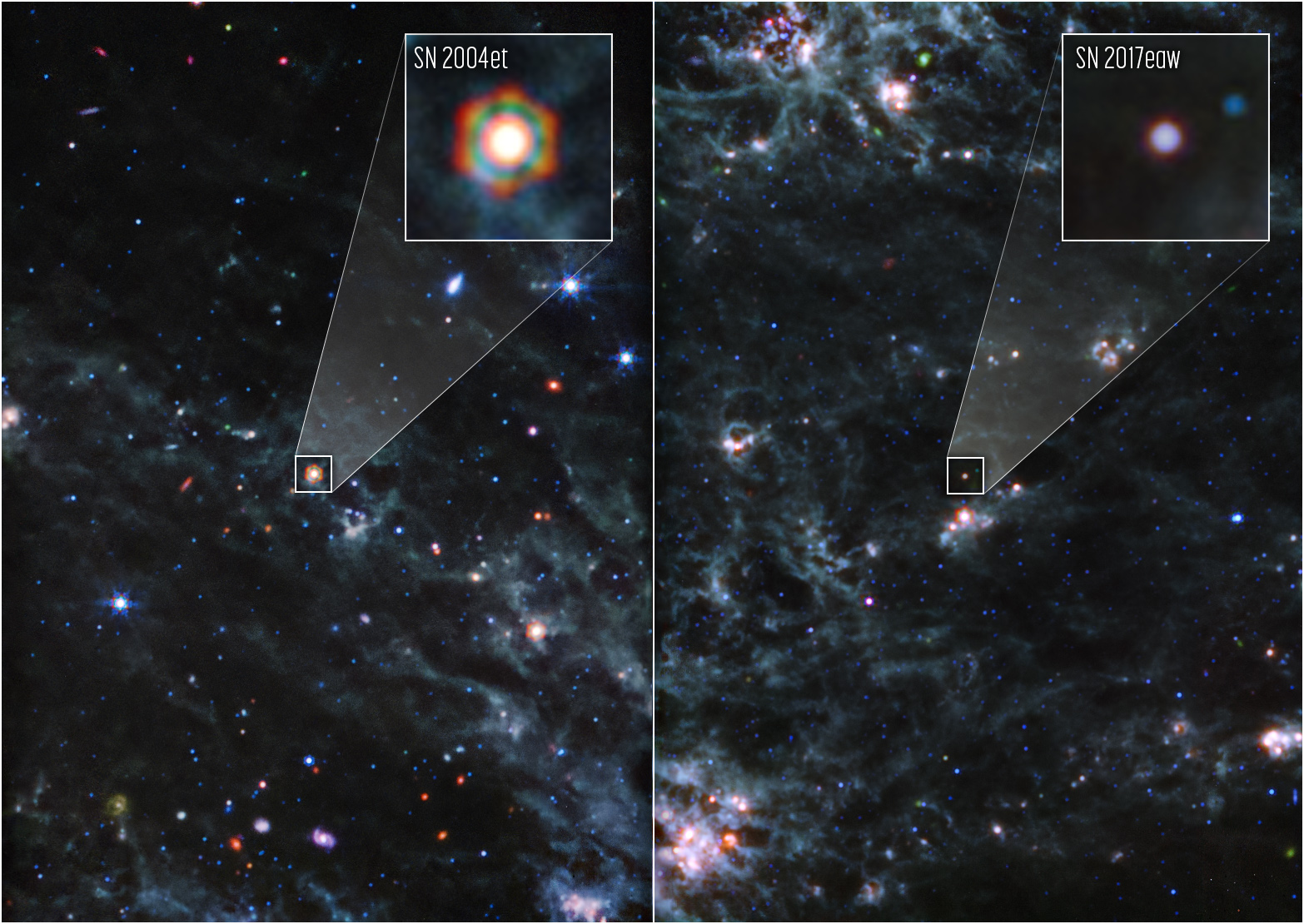Life and death are part of a cycle. When an animal dies, its body decays, releasing important nutrients into the ground. Those nutrients then help birth other life in the form of plants and microorganisms. It seems that may also be the case for the cosmos, too, as new Webb observations of supernovas could teach us more about how young, early galaxies get fuel for star and planet formation.
Supernovas are the deaths of stars and are some of the largest bursts of energy and light released in our universe, astronomers say. Now, new Webb observations of two supernovas in the Fireworks Galaxy (NGC 6946) could provide some clues as to how early galaxies got the dust they needed to fuel star birth.
According to an STScI release, as well as a new paper published in the Monthly Notices of the Royal Astronomical Society, dust from these supernovas was ejected from the explosion, which could have then been used by nearby forming galaxies to help fuel star and planet birth. That’s because dust is a key part of how many things in our universe form, especially planets.

As such, dust ejected from a dying star would make sense as a source of cosmic dust used to fuel the growth of galaxies in the earliest days of our universe. However, direct evidence of this has been very slim up until these latest Webb observations, Melissa Shahbandeh, who works with John Hopkins University and the Space Telescope Science Institute (STScI), explained.
Webb’s latest observations are the first real breakthrough in the study of how dust is produced by supernovae since early detection by the Atacama Large Millimeter/submillimeter Array (ALMA) almost ten years ago. But it isn’t just the detection of dust that makes it so intriguing, it’s also how much dust the researchers detected using James Webb. In fact, they found more than 5,000 Earth masses of dust.
With that much dust, several young galaxies could have fueled the growth of their stars and planets. And this is just how much was discovered in a single supernova. If you start adding up all the supernovas out there, including those James Webb hasn’t observed, you’re looking at more than enough dust to fuel the growth of the early universe.
Now all that remains to be seen is whether that dust continues to be a source of fuel for planet and star formation.








